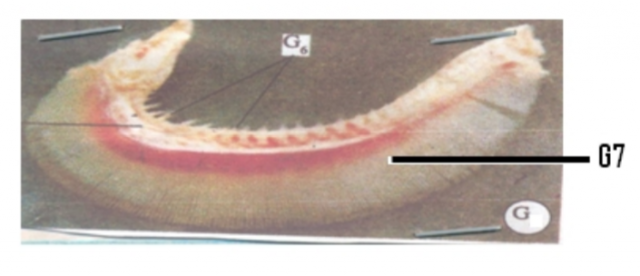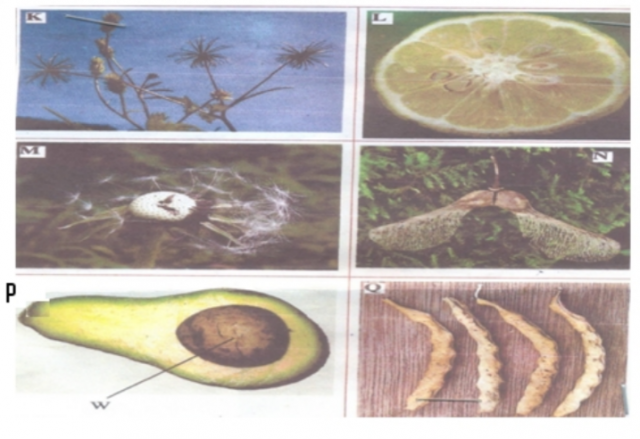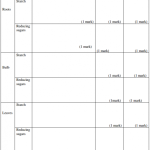KCSE Biology Paper 3 – 2014 EKSIKA Joint Evaluation Test
2014 EKSIKA Joint Evaluation Test
Biology Paper 3
QUESTION 1 (11 Marks)
Answer ALL questions in the spaces provided above.
You are provided with photograph of specimen P.
(a)(i) Name the class to which the specimen P belongs. (1mk)
(ii) Give two reasons for your answer in a(i) above. (2mks)
(b) Name observable features that adapt the specimen to.
(i) Forward movement (1mk)
(ii) Balancing (1mk)
(iii) Staying upright (1mk)
(iv) Fast movement (1mk)
(c) The part below was cut and removed from specimen P.
(i) Identify the specimen extract (1mk)
(ii) Name parts labeled G6 and G7 (2mks)
(iii) State the function of the specimen extract (1mk)
11 marks
QUESTION 2 (15 Marks)
Answer ALL questions in the spaces provided above.
Below are photographs of specimens obtained from plants. Examine the photographs.
(a) In the table below name the mode of dispersal and the features that adapt each specimen to that mode of dispersal. (12mks)
| Specimen | Mode of Dispersal | Adaptive Feature |
| K |
|
|
| L |
|
|
| M |
|
|
| N |
|
|
| P |
|
|
| Q |
|
|
(b) State the type of placentation in specimen L. (1mk)
(c) Name the structure labeled W on specimen P. (1mk)
(d) State the type of fruit represented by specimen L (1mk)
15 marks
You are provided with specimen Y which is part of a plant.
(a) With reason identify the part of the plant represented by specimen Y. (2mks)
(b) Draw a plain diagram of the transverse section of one of the cut surfaces. (1mk)
(c) With reason state the class of the plant from which specimen Y was obtained. (2mks)
(d) Peel the specimen using a knife. Put the small pieces of the peeled parts in amortar. Use the pestle to crush the pieces. Squeeze out juice from the crushed pieces into a small beaker. Use the reagent provided to determine the food substance present in specimen Y.Record the food substance; tested.Procedure,observations and conclusions in the table below. (9mks)
Note:
. Solution P is Iodine Solution,
. Solution Q is Benedict Solution
. Solution R is 1% CuSO4,
. Solution S is 5% NaOH,
| Food Tested | Procedure | Observation | Conclusion |
|
|
|
|
|
|
|
|
|
|
|
|
|
|
|
14 marks
QUESTION 3 (14 Marks)
Answer ALL questions in the spaces provided above.









